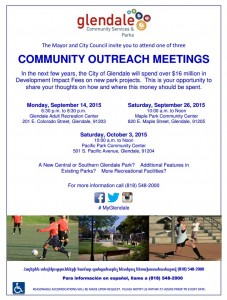 The City of Glendale is growing. The increase in development of the downtown area has provided the City some funds for parks, and they are asking the public how that money should be spent.
The City of Glendale is growing. The increase in development of the downtown area has provided the City some funds for parks, and they are asking the public how that money should be spent.
We have some ideas, and you might too. The City wants to hear from us on Saturday, September 26, 10 a.m. – noon at the Maple Park Community Center, 820 E. Maple Street, Glendale, 91205. A third meeting will take place at the Pacific Park Community Center on Saturday, October 3, 10 a.m. – noon.
In 2008, CORBA successfully lobbied the City of Glendale to include a Bicycle Skills Park and Bike-Only downhill trail in their Trail Master Plan. In 2012, CORBA and the Los Angeles County Bicycle Coalition advocated for a bicycle skills park in their Safe and Healthy Streets Plan (within Chapter 3, Encouragement, and Chapter 2, Education components of that plan).
We started a Glendale Bike Park petition in 2011 that gathered over 500 signatures online and several hundred more on paper. That online petition is still live and available to be signed at: http://www.ipetitions.com/petition/glendale_bike_skills_park/. This pre-dates our current Los Angeles Bike Park Collective Petition which has over 1800 signatures calling for bike parks in the greater Los Angeles area.
in 2011 CORBA’s then Vice President Steve Messer and former high school mountain biking Coach Mauricio Barba testified before the Glendale Parks Commission to propose a new bike park. Not long after, the great recession forced the City to cut back and put many programs on hold, including our Bike Park proposal.
Earlier, in 2007 CORBA gave significant input to the City of Glendale Trail Master Plan. We proposed, and the City adopted plans for a number of new trails. Since the opening of the highly successful Catalina Verdugo trail, we believe the City is ready for a beginner-friendly multi-use singletrack trail connection from Brand Library to Las Flores Motorway and South Beaudry Motorway. Such a trail would connect these popular fire road routes and make much more interesting loop ride or hikes possible, at more beginner-friendly grades than existing fire roads.
The funds available to the City of Glendale are primarily allocated for the downtown and south Glendale areas, but there is an opportunity for some of those funds be allocated to projects that have a city-wide benefit. Come on out and ask Glendale for the Bike Skills Park, and new trails that will benefit the entire community, and/or a smaller Community Pump Track for South Glendale, or perhaps even the proposed Space 134 project, where you can currently vote for a “Bike Station.”


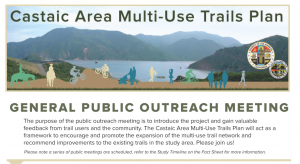

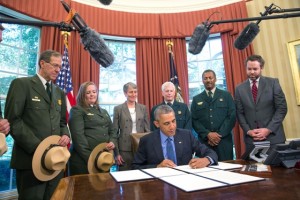
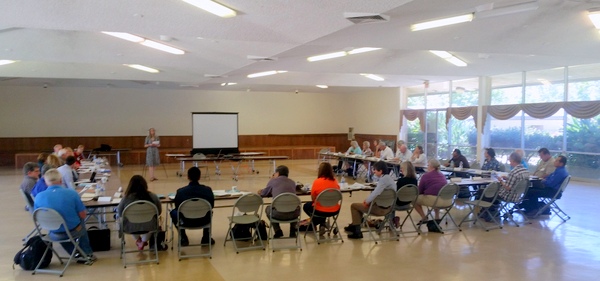
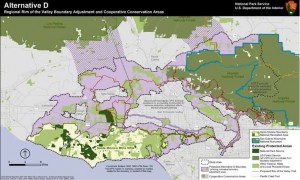
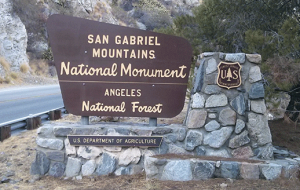



San Gabriel Mountains National Monument Management Plan Comments
Tuesday, August 11th, 2015As members of the San Gabriel Mountains National Monument Community Collaborative, we have also signed the consensus comments submitted by the Collaborative group, which we helped develop.
These are an important milestone in the development of a management plan for our new National Monument. The Presidential Proclamation directed the Forest Service to develop a management plan within three years. Most management plans take longer than that to develop, but the Forest Service’s approach to amend the current plan should allow them to complete the plan within the alotted time frame. We were pleased that the Forest Service extended the current comment period to allow for more thoughtful comments.
We were in general agreement with most of the findings of the “Need to Change” analysis, which stated specifically that the existing Forest Plan guidance on Recreation Management did not need to change. However, the Proclamation calls for the development of a Transportation Plan, which could impact recreational trail management. Accordingly, we commented on the need to develop a transportation plan for the entire Forest, both to improve recreational opportunities and to protect the resources of the Forest.
It is now up to the Forest Service to take into consideration all of the comments submitted, and their own analysis to develop a draft Environmental Assessment and Monument Management Plan. We expect that draft to be available for public review in spring, 2016.
Until that time, we’ll continue to work with the Forest Service on project-level issues including trail maintenance and restoration, in accordance with our existing partnership and volunteer agreements.
Comment PDF: 2015-08-11 – CORBA and MWBA SGMNM Need to Change Comments
Tags:Management Planning, Public Comments, Trail Plan
Posted in Angeles National Forest, Environment, San Gabriel Mountains, San Gabriels National Monument, Trail Access | 1 Comment »